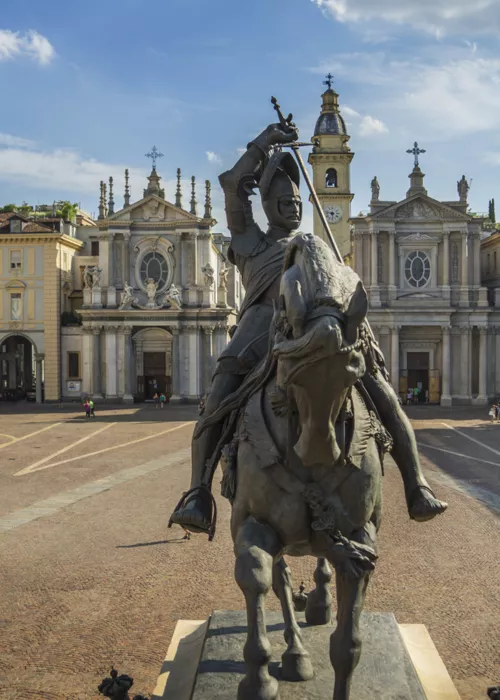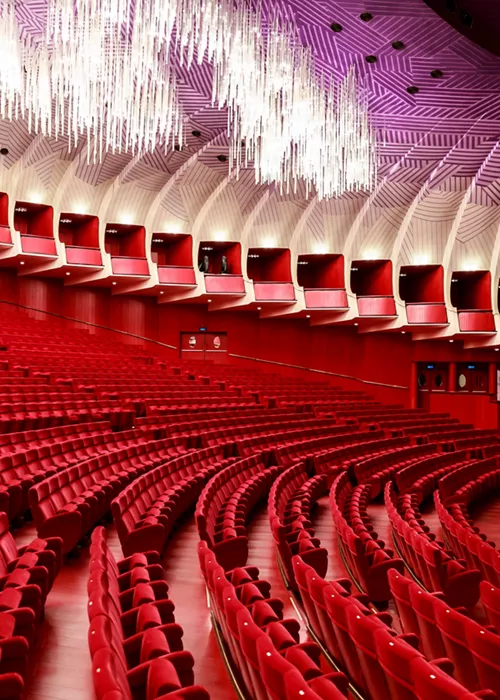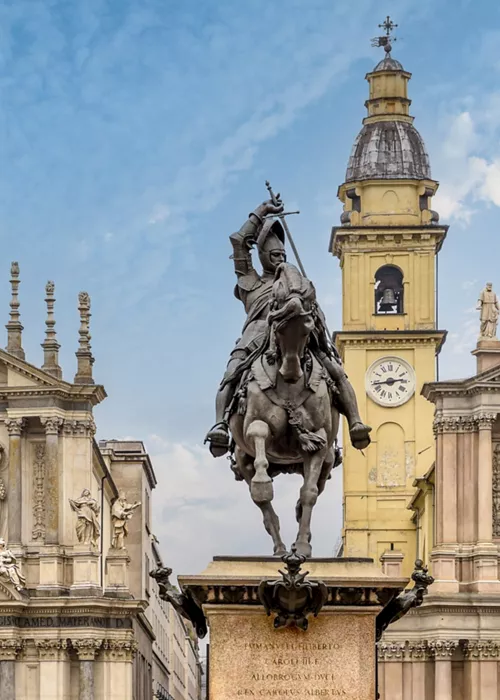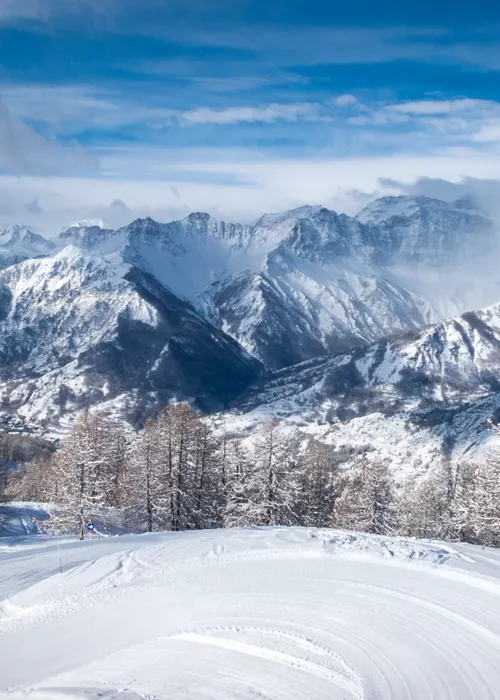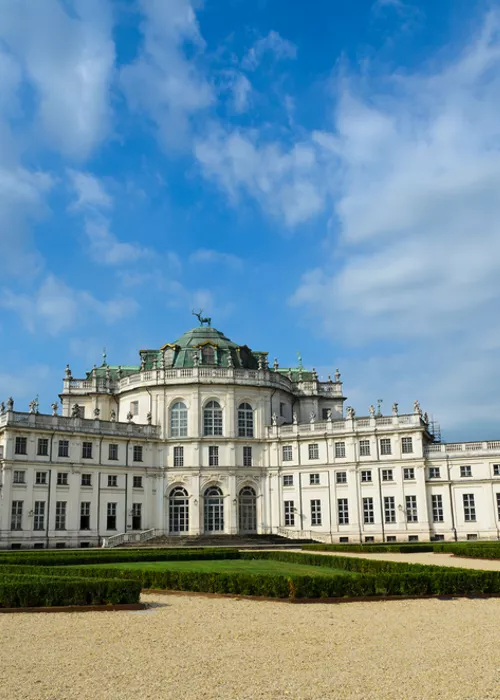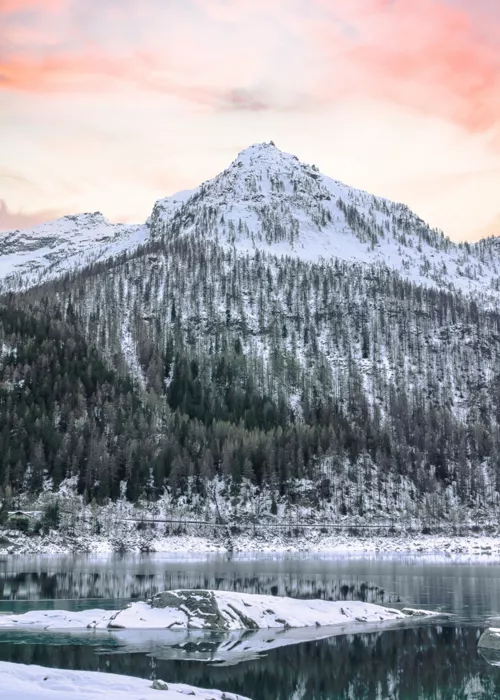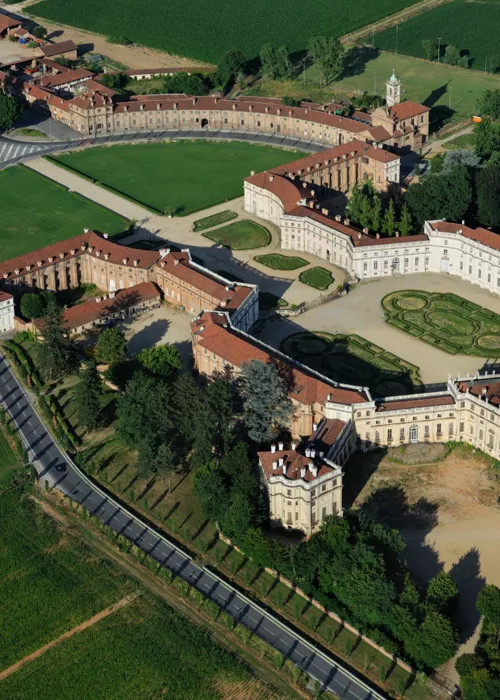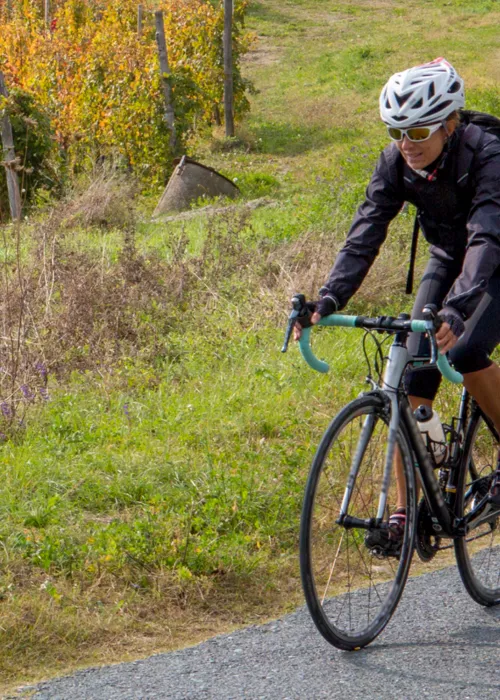Valli di Lanzo Experience: three days among historic peaks, villages and nature
10 minutes

Index
West of Canavese and north of the Susa Valley, three valleys of the Graian Alps open out, all named for Lanzo Torinese. These are closed valleys, with no pass into France, rich in waters that flow into the Stura di Lanzo, a left‑bank tributary of the Po. Together they host many summer residences built or modernised by Turin families between the 19th and early 20th centuries and offer wonderful summer hikes and winter sports.
A year‑round draw for skiing and snowshoeing, the valleys also reward in other seasons with peaceful routes in search of natural horizons and local traditions rich in flavours and aromas. In the Valli di Lanzo there are clear traces linked to the Shroud of Turin, the holy linen kept in Turin Cathedral, and to the House of Savoy, the royal family that acquired it in the mid‑15th century and brought it to Piedmont a century later via these very routes.
From the Royal Palace of Venaria to Ciriè and Lanzo Torinese

The itinerary begins at Venaria Reale, crosses Ciriè and Lanzo Torinese, and leads into the Valli di Lanzo, which carve through the Graian Alps and were already celebrated in the late 19th century as the “little Switzerland of Piedmont”. Today, after the age of summer holidays waned, these valleys are a refuge for those seeking authentic, quiet nature. Beyond the landscape charm, they stand out for Liberty‑style architecture and the viaducts of the historic Turin–Ceres railway.
Ciriè (344 m; c. 19,000 inh.) makes an ideal stop to sample local dishes and explore the food‑and‑wine traditions of the Valli di Lanzo. Of Roman origin, it preserves a historic core still marked by the Middle Ages, thanks to surviving buildings and terracotta decoration. The Gothic Cathedral, dedicated to St John the Baptist, was extensively restored in the 19th century. The Town Hall is housed in the 17th‑century Palazzo d’Oria, which contains numerous works of art. On Via Lanzo stands the Church of St Martin of Liramo, with Romanesque remains.
Continue to Lanzo Torinese, an enchanting town with evident medieval roots. At the mouth of the Valli di Lanzo, in the Middle Ages the settlement (515 m; c. 5,000 inh.) was controlled by the bishops of Turin and the marquises of Monferrato, before passing to the Savoy. The historic nucleus is entered through the Civic Gate and Tower of Aimone of Challant, a prestigious entrance to the town’s treasures and the only surviving element of the 14th‑century walls. On Piazza Albert stands the Parish Church of St Peter in Chains, with fine works including an altarpiece by Beaumont and a 19th‑century fresco depicting the Shroud. Also noteworthy are Renaissance Piazza Gallenga, the wooden group in the Church of Santa Maria al Borgo, the Mountaineering History Museum created by the local CAI club and the Lanzese Textile Art Museum in the former Este palace.
The most famous site lies at the foot of the mountain, at the mouth of a tunnel: the Devil’s Bridge (or Roc Bridge) (1378), which spans the Stura with a single 65‑metre donkey‑back arch and a central portal. A masterpiece of medieval architecture, it has inspired a legend attributing its construction to the Devil himself; locals say his footprint can be seen at the end of the bridge near the Chapel of St Roch. The bridge stands within a large nature park of the same name, with trails and viewpoints revealing the beauty of the structure and its setting.
Ahead, by the scenographic village of Mezzenile, the valley divides into three: Val Grande, Val d’Ala and the Valle di Viù—a system defined by mountain torrents in the lower reaches, all linked to the Stura di Lanzo and collectively known as the Valli di Lanzo.
The route now explores Val Grande, the broadest and flattest of the three valleys.
Cantoira and Vru: lush nature, bygone mines and a sanctuary poised between sky and valleys

Welcome to Val Grande, the broadest and flattest of the three Valli di Lanzo: wide views and gentle, relaxing landscapes make it ideal for outdoor sports—walks and hikes, trekking, mountain‑biking, climbing, canoeing, kayaking and paragliding.
In the municipality of Cantoira (750 m; c. 600 inh.), nicknamed the “garden of Turin” for its luxuriant woods and meadows on the slopes of Monte Bellavarda, the Lanzo CAI has transformed the former Brunetta talc mine (1,580 m), starting from the hamlet of Vru (1,030 m), into an engaging Industrial Archaeology Museum: the mining complex beside the gallery entrance, with workshops and depots, merits a visit. Beside the church in Vru, in the former school, a singular mechanical nativity scene depicts the trades and lives of mountain folk.
Above Cantoira, clinging like an eagle’s nest to a sheer rock that divides Val d’Ala from Val Grande, the Sanctuary of St Cristina is reachable only on foot along a path that starts at Casa Goffo, crosses a bridge and climbs a final staircase of 366 steps. The first chapel was built in the 14th century and later enlarged. Inside the rectangular complex, traces of frescoes remain.
Chialamberto: stone hamlets, “witches’ pillars” and a sanctuary overlooking alpine peaks

The scattered municipality centred on Pialpetta (1,110 m; c. 200 inh.) stretches to the head of the valley. Among many hikes, we recommend the wild Unghiasse side‑valley, at whose head lies Gran Lago d’Unghiasse (2,494 m). Beyond Ricchiardi (1,073 m), by the Groscavallo cemetery, the Bec Ceresin (1,708 m) stands out to the left, a rocky prism narrower at its base than at the summit, while the head of the valley is dominated by the walls that mark the French border and culminate in the Levanna Orientale (3,555 m). Continue to Forno Alpi Graie, the day’s final stage.
Forno Alpi Graie: last alpine hamlets, steep trails and wild valleys beneath great peaks

After Groscavallo the road narrows, passing age‑old chalets before opening onto a sweeping panorama of the mountain amphitheatre that closes the valley, then arrives at Forno Alpi Graie (1,226 m), once a mining centre and today an alpine and hiking base below imposing summits. A short stroll through the lanes leads to the church at the foot of a rocky spur. A stairway of 444 steps climbs to the popular Sanctuary of Our Lady of Loreto, 18th‑century and completed in the late 19th, set in woods of venerable beech, maple and ash at the mouth of the wild Sea side‑valley. Thus ends day one in Val Grande. Day two explores Val d’Ala, the narrowest and steepest—and in some ways wildest—of the Valli di Lanzo, picturesque for the variety of its landscapes and untamed character, frequented by hikers and alpinists.
Ceres: gateway to the Valli di Lanzo—Romanesque art, open‑air museums and surprising alpine vistas

Day two is dedicated to Val d’Ala and its villages—the narrowest and steepest of the Valli di Lanzo, and in some respects the wildest: a place of tangled woods and stone‑and‑timber houses that express the rugged alpine spirit of its people. Until the early 20th century it was a centre for ironworking. At the confluence of Val Grande and Val d’Ala, Ceres (704 m; c. 1,000 inh.) developed early as a holiday resort in the first decades of the 20th century thanks to the Turin–Ceres railway. The ancient Parish Church of St Marcellina, with a campanile in Lombard Gothic style, is considered the best example of Romanesque architecture in the Valli di Lanzo: square‑based and c. 21 metres high, its upper section has two storeys of mullioned windows framed by six small arches. On Piazza Municipio is the Museum of the Peoples of the Valli di Lanzo, an ethnographic collection enhanced by the open‑air educational trail Museum of the Peoples, which also has a natural‑history theme. Notable sights include the bold railway viaduct (1916), among the first in Italy in reinforced concrete, and the elegant Vana donkey‑back bridge (1740) near the station, terminus of the line linking Ceres with Turin. In the hamlet of Voragno, on the outer wall of the Chapel of Sts Fabian and Sebastian, 16th‑century frescoes depict the Shroud: the first representation of an official ostension.
Ala di Stura: ski resort and cradle of mountaineering amid breathtaking alpine panoramas

Beyond Ceres the road climbs the valley with views to the summits and reaches Ala di Stura (1,080 m; c. 450 inh.), a holiday centre with Belle‑Époque echoes (Grand Hotel, 1910) and a winter‑sports destination. Sundials and frescoes enliven many façades in the village and its hamlets, while Savoy coats of arms adorn the customs‑tower. About ten minutes on foot from the hamlet of Mondrone, on the road to Balme, the waters of the Stura plunge into a very narrow gorge at the spectacular Gorgia di Mondrone, dropping in several steps for around 60 m. High on the right, the mass of Uia di Mondrone (2,964 m) dominates the view. You can return to the hamlet on a 45‑minute loop that climbs from the gorge to the Pianard bridge. Continue on to Balme, the third stage of the day.
Balme: cradle of historic Piedmontese mountaineering, with Shroud frescoes and spectacular high‑alpine scenery

Beyond Ala di Stura, the road threads characteristic rock‑hewn galleries, passes age‑old chalets adorned with tools and opens views to the valley peaks, then arrives at the highest settlement (1,432 m; c. 100 inh.) in the Valli di Lanzo: Balme. The village is dominated by the rustic Ruciàss fortified house (16th c.), clinging to a rock above the Stura, which drops away in a cascade to form the evocative Gorgia; built in 1591, the small castle preserves frescoes linked to the Shroud’s passage through the valley on its journey from Chambéry to Turin. In the heart of old Balme a Shroud chapel is frescoed. Despite Balme’s relatively modest altitude, this is high‑mountain country—no coincidence that Piedmont’s first and most respected alpine guides came from here, opening dozens of climbing routes from the mid‑19th century. They are celebrated in the Ecomuseum of Alpine Guides, housed in the former white town hall, displaying the simple equipment with which they were outfitted. Continue to the fourth and last stage of the day at the Pian della Mussa, one of the most spectacular places in all the Valli di Lanzo.
Pian della Mussa: hiking, cross‑country skiing and local cuisine beneath alpine summits

The road from Balme climbs—traffic‑limited at certain times of year—to the Pian della Mussa, one of the Valli di Lanzo’s most spectacular sites, dominated by a grand mountain arc crowned by the majestic Uja di Ciamarella and Uja di Bessanese. This broad, verdant plateau (1,752 m), dotted with larches and pastures, is a protected area that embraces the surrounding alpine nature and atmosphere: an over two‑kilometre‑long high plain formed by the silting‑up of a glacial lake. At the foot of Roc Neir stands the former Hotel Broggi, a luxurious mountain hotel built in 1899. On the opposite side of the plain are the sources of the Turin Aqueduct, which supplied the city’s water in the early 20th century. In winter a scenic cross‑country ski trail is prepared here, starting from Balme and following the provincial road, closed to traffic in season. The road ends at the Rifugio Città di Ciriè (1,850 m), a base for hikes and ascents, also with cross‑country or ski‑mountaineering gear. Today this plateau is ideal for medium‑altitude trekking, finding solitude and quiet in the mountains. It offers many picnic and barbecue areas. After a day outdoors—between climbing, snowshoeing and ski‑mountaineering—you can round off with local cuisine in one of the atmospheric refuges, perhaps a classic polenta, ever‑present on alpine menus, washed down with wine or the beer brewed at Pian della Mussa. A favourite hike leads to Rifugio Gastaldi, with views from Rocca Tura. Thus ends day two in Val d’Ala. The third and final day is dedicated to the Valle di Viù.
Viù: historic villas, Celtic archaeology and ancient places of worship in the Viù Valley

Let’s conclude our itinerary in the Valle di Viù, the southernmost and longest of the Valli di Lanzo. The valley runs between rugged slopes, opening at points into wide basins such as the green Viù basin, the Lèmie basin and the long Usseglio plain—the gentlest of the three valleys. Shortly after entering the valley, a detour to the hamlet of Castagnole leads to the small Museum of Everyday Objects; then a series of tight bends climbs to Viù, the main centre of the valley.
The village’s early tourism (774 m; c. 1,000 inh.) is evidenced by 19th‑century historic villas such as Villa Franchetti, which hosted the composer Giacomo Puccini. On Piazza del Mercato stands the Falchero Boulder, one of the area’s most important archaeological finds: dating to the 2nd century BC, it is carved in low relief with what likely represent the Three Mothers, who in Celtic culture preside over human life; the stone was long used as a base for a walnut press. In the Church of St Martin there are paintings, crucifixes, sacred furnishings and a fine frescoed chapel. Continue towards the Colle del Lys.
Colle del Lys: panoramic pass of protected nature, memory trails and Resistance sites

This Graian Alps pass (1,311 m) offers far‑reaching views and, via a historical route, links the Valle di Viù with the lower Susa Valley. On the pass, the Ecomuseum of the Resistance commemorates the contribution these valleys made during the Italian Resistance, when several partisan brigades fought here. One of them, the 17th Garibaldi Brigade, was brutally tortured and killed by German troops on 2 July 1944: to commemorate the massacre of 26 partisans, a tower‑memorial was raised on the pass, where an annual ceremony is held. The ecomuseum is complemented by a display with natural‑history exhibits and by the Sentieri della memoria (“trails of memory”). The pass is part of the provincial protected areas system. Continue towards Lèmie, the day’s third stage.


